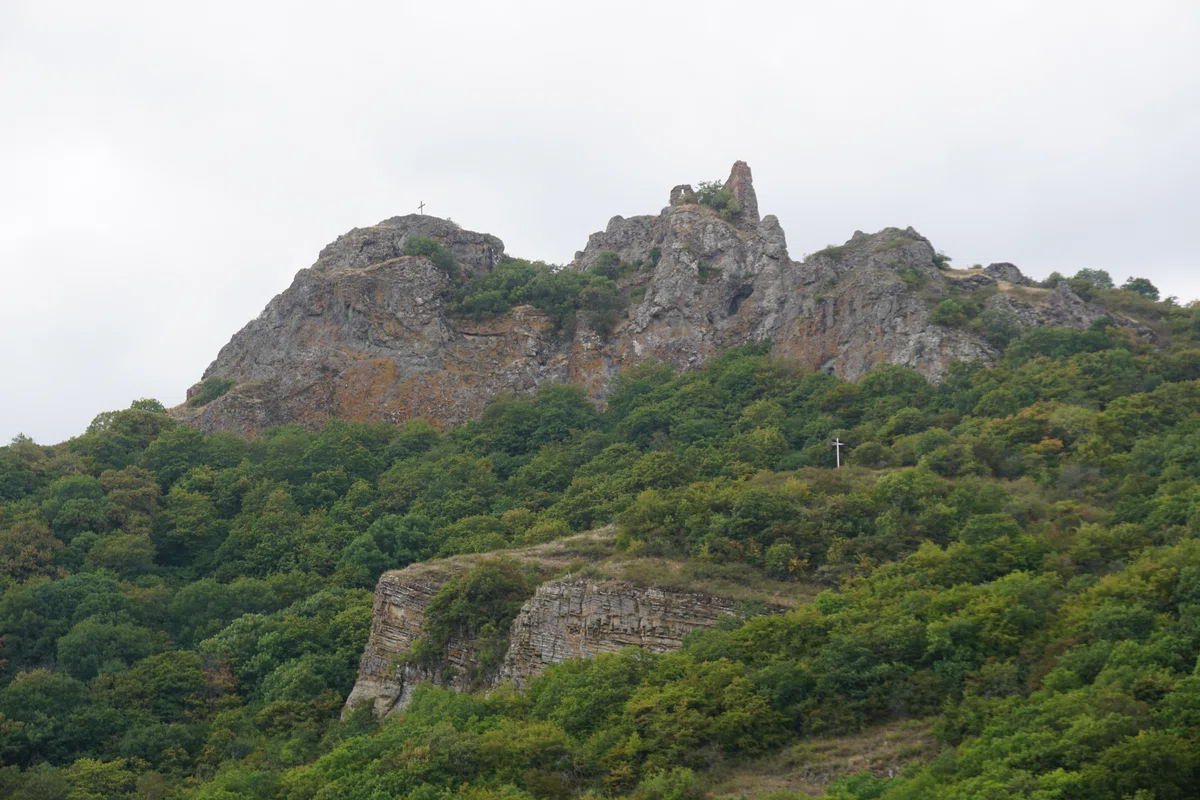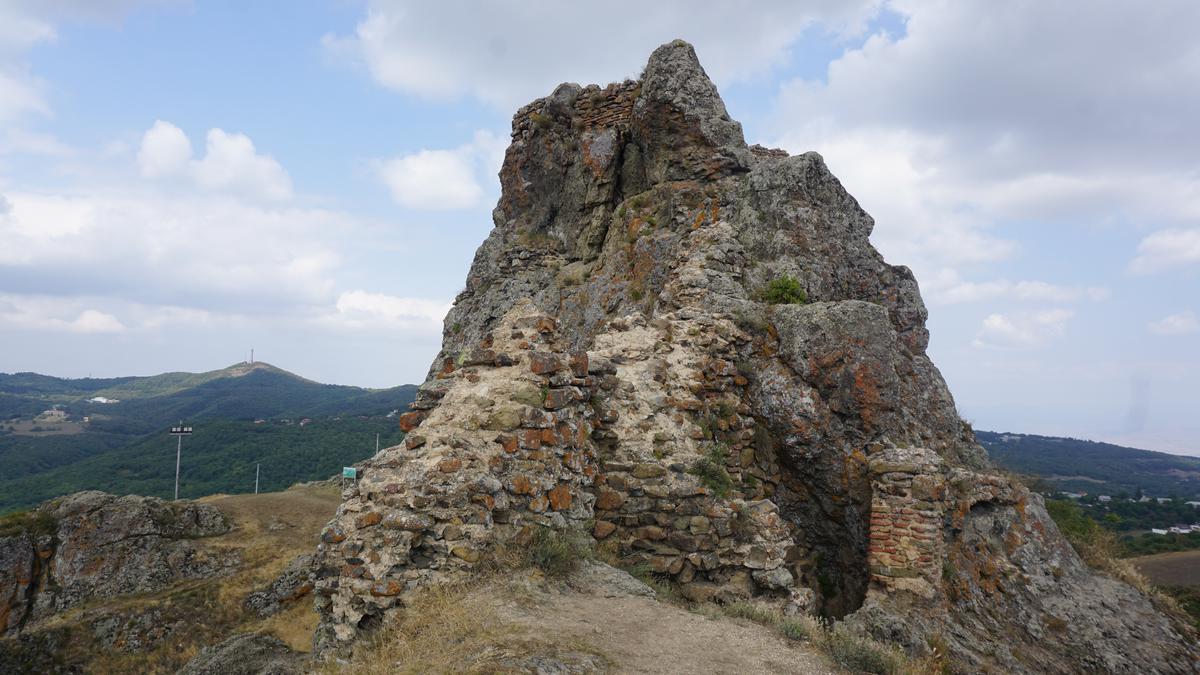
Ancient ruins in Georgia. Visit Kojori Fortress.
The Kojor fortress is located on a mountain of volcanic origin. The main task of the fortress at one time was to monitor the trade routes and monitor their safety. The architecture of the fortress was quite complex, it's just a pity that the ruins of the fence and the tower have reached our days.
The Kojori Fortress was heard once more in the history of Georgia: in February 1921, the Kojor Fortress It was defeated, and as a result, the country was part of the Soviet Union until 1991.Georgian junkers offered stubborn resistance to the invading Red Army. In an unequal Battle, the Georgian Democratic Republic (1918-1921) p

In the south-west direction from Tbilisi the serpentine road rises, passing by the Tbilisi suburban resort areas – Okrokana, Shindisi and Tabakhmel, and leads to the village of Kojori. The length of this road from the city center is 16 km, and a hiking trail from Mtatsminda before Kojori it is only 7 km away,
Kojori is known as a climatic resort, the mountain climate of which helps to restore the general tone of the body and strengthen immunity. The climate is especially useful for young children.
Kojori was the summer residence of the Georgian nobility. Located in the vicinity of the capital and distinguished by the magnificent air. Georgian tsars also visited the village in the summer. Including Queen Tamara, who, being ill, settled here and died here in 1213.
Two kilometers from the village, on a high rocky mountain of volcanic origin, stands the Kojor fortress (the fortress has other names - Agarani, Korogli, and the ancient Georgian Geographer Vakhushti Bagrationi calls it Azeula). The fortress was built at the crossroads of caravan trade roads going from Gardabani to Shida Kartli and from Tbilisi to Trialeti. Such a strategic location determined the main function of the fortress - monitoring the caravan trade routes and ensuring their security. At the same time, the Kojor fortress was a "fortress-gate" at the entrance to Tbilisi.
The fortress has a complex architectural plan. Traces of numerous reconstructions indicate numerous battles taking place on the territory. The ruins of the fence and the round tower dating back to the XVI-XVIII century have been preserved to this day.
In 1801, after the annexation of Georgia to Russia, the Kojor fortress lost its defensive and strategic function.
Gradually, the destruction of the main part of the structure began. Earthquakes and looting did not spare the walls of the fortress, so only a small part of it has survived to this day.
Read more about the sights of Georgia and the customs of its people on the pages of the madloba resource. We collect valuable and useful information about everything that happens in the country. Thanks to the recommendations from our experts, you can easily organize the perfect trip to an ancient country or even a move!













34 comments
Log in to leave a comment